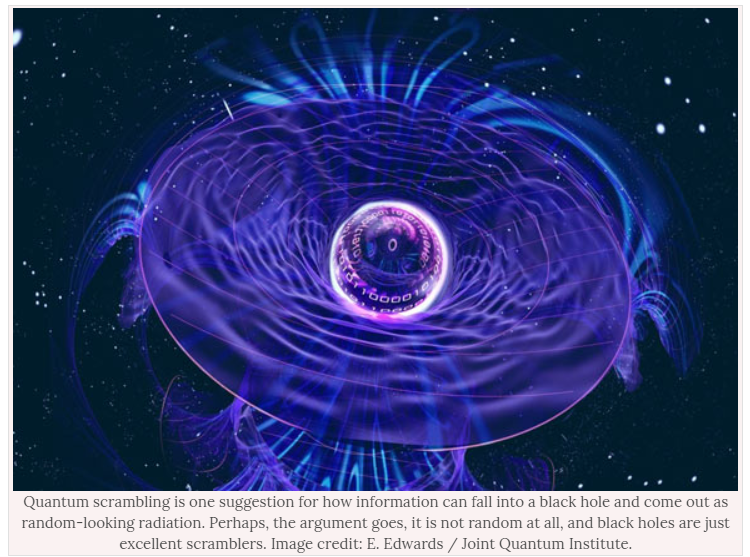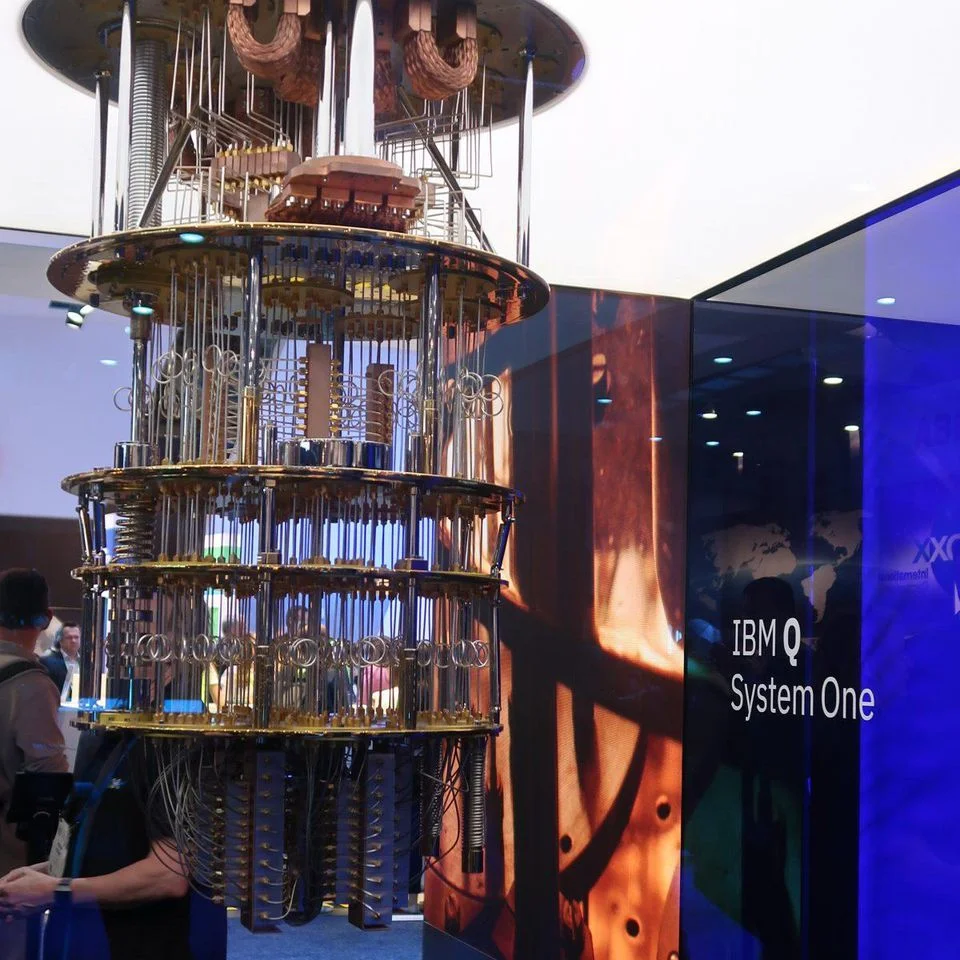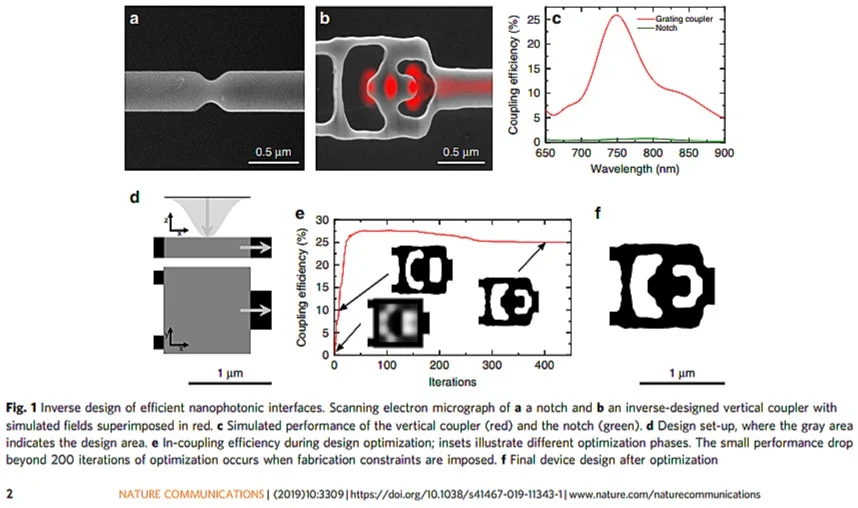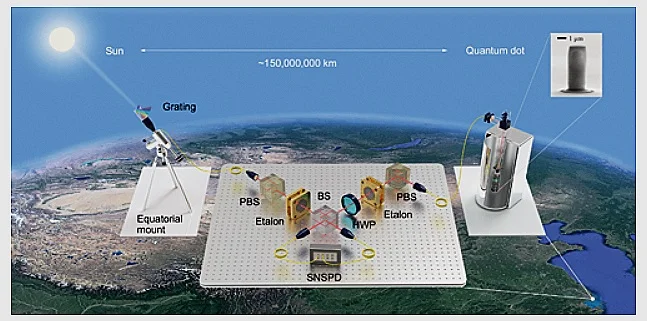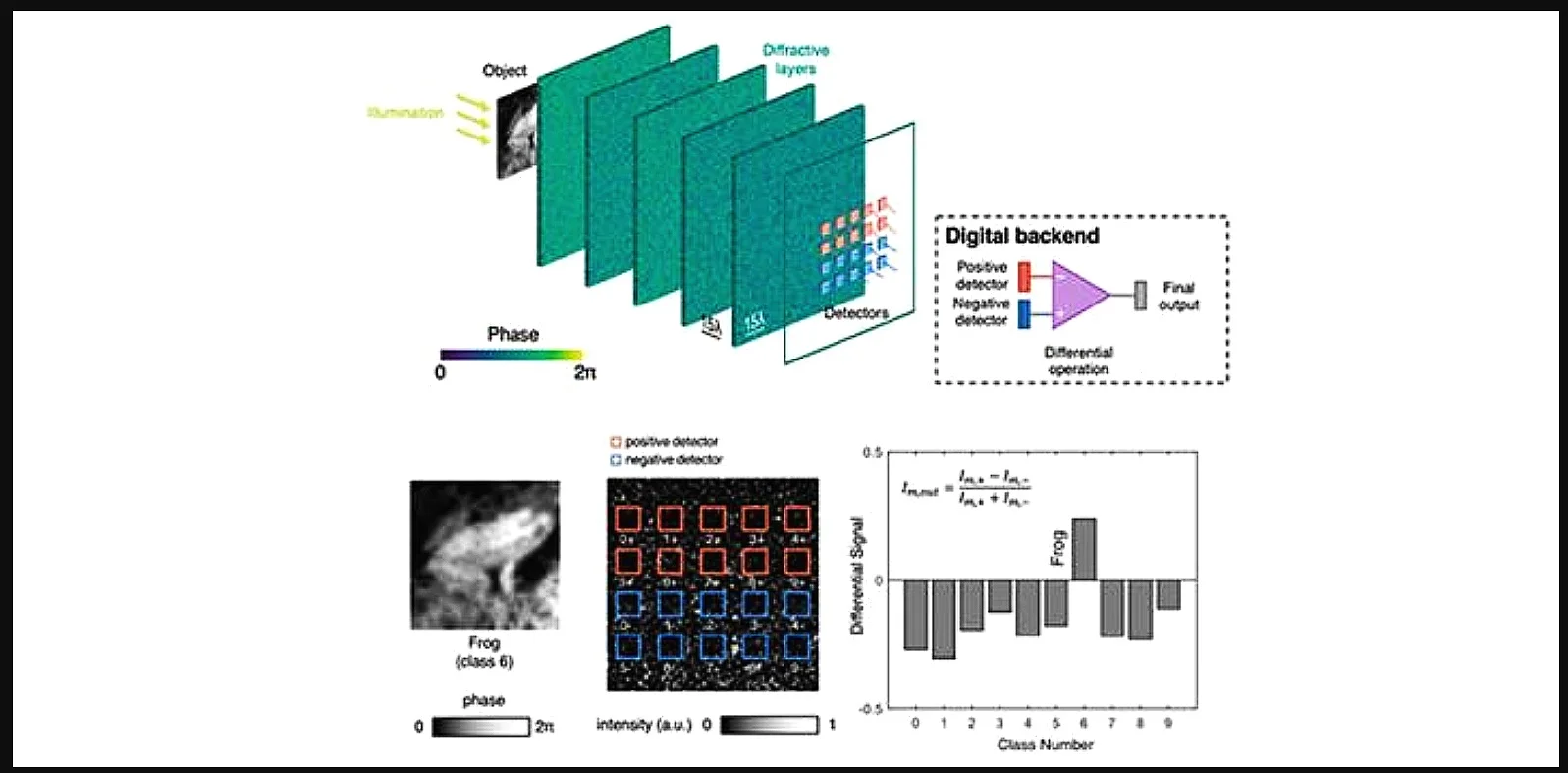Seeing and Believing
"These very simple coupled mechanisms can potentially be implemented on swarms of tiny robots with very limited power, computational and memory resources, which in spite of their individual simplicity can work together to produce the complex swarming behaviors we predict in our model," Petersen said.
One future application could be for precision medicine where tiny magnetized insoluble particles could swarm and be synchronized in relation to each other and then controlled to deliver a payload to tissues in need of a therapy.
Theoretical Physicists Describe New Kind of Quantum Time Order
Aug 31, 2019
One of the fundamental principles of quantum mechanics is quantum superposition, in which a particle exists in two or more states simultaneously. In a paper published in the journal Nature Communications, University of Queensland physicist Magdalena Zych and colleagues show that particles are not the only objects that can exist in a state of superposition — so can time itself.
Computer to Simulate Scrambling inside Black Holes
Mar 7, 2019
The information attached to that matter — the identities of all its constituents, down to the energy and momentum of its most elementary particles — is chaotically mixed with all the other matter and information inside, seemingly making it impossible to retrieve. This leads to a so-called ‘black hole information paradox,’ since quantum mechanics says that information is never lost, even when that information disappears inside a black hole. So, while some theoretical physicists claim that information falling through the event horizon of a black hole is lost forever, others argue that this information can be reconstructed, but only after waiting an inordinate amount of time — until the black hole has shrunk to nearly half its original size.
Black holes shrink because they emit Hawking radiation, which is caused by quantum mechanical fluctuations at the very edge of the black hole and is named after the late physicist Stephen Hawking. Unfortunately, a black hole the mass of our Sun would take about 1067 years to evaporate — far, far longer than the age of the Universe. However, it may be possible to retrieve this infalling information significantly faster by measuring subtle entanglements between the black hole and the Hawking radiation it emits. Two bits of information — like the quantum bits, or qubits, in a quantum computer — are entangled when they are so closely linked that the quantum state of one automatically determines the state of the other, no matter how far apart they are.
Successful Time Alteration
Researchers from the Moscow Institute of Physics and Technology teamed up with colleagues from the U.S. and Switzerland and returned the state of a quantum computer a fraction of a second into the past. They also calculated the probability that an electron in empty interstellar space will spontaneously travel back into its recent past. The study is published in Scientific Reports.
IBM’s Quantum Computer
Teleportation
Abstract: All-optical quantum teleportation lies at the heart of quantum communication science and technology. This quantum phenomenon is built up around the non-local properties of entangled states of light that, in the perspective of real-life applications, should be encoded on photon pairs generated on demand. Despite recent advances, however, the exploitation of deterministic quantum light sources in push-button quantum teleportation schemes remains a major open challenge. Here, we perform an important step toward this goal and show that photon pairs generated on demand by a GaAs quantum dot can be used to implement a teleportation protocol whose fidelity violates the classical limit (by more than 5 SDs) for arbitrary input states. Moreover, we develop a theoretical framework that matches the experimental observations and that defines the degree of entanglement and indistinguishably needed to overcome the classical limit independently of the input state. Our results emphasize that on-demand solid-state quantum emitters are one of the most promising candidates to realize deterministic quantum teleportation in practical quantum networks.
Inverse-Designed Diamond Photonics
Abstract: Diamond hosts optically active color centers with great promise in quantum computation, networking, and sensing. Realization of such applications is contingent upon the integration of color centers into photonic circuits. However, current diamond quantum optics experiments are restricted to single devices and few quantum emitters because fabrication constraints limit device functionalities, thus precluding color center integrated photonic circuits. In this work, we utilize inverse design methods to overcome constraints of cutting-edge diamond nanofabrication methods and fabricate compact and robust diamond devices with unique specifications. Our design method leverages advanced optimization techniques to search the full parameter space for fabricable device designs. We experimentally demonstrate inverse-designed photonic free-space interfaces as well as their scalable integration with two vastly different devices: classical photonic crystal cavities and inverse-designed waveguide-splitters. The multi-device integration capability and performance of our inverse-designed diamond platform represents a critical advancement toward integrated diamond quantum optical circuits.
Bell’s Theorem for Temporal Order
Time has a fundamentally different character in quantum mechanics and in general relativity. In quantum theory events unfold in a fixed order while in general relativity temporal order is influenced by the distribution of matter. When matter requires a quantum description, temporal order is expected to become non-classical—a scenario beyond the scope of current theories. Here we provide a direct description of such a scenario. We consider a thought experiment with a massive body in a spatial superposition and show how it leads to entanglement of temporal orders between time-like events. This entanglement enables accomplishing a task, violation of a Bell inequality, that is impossible under local classical temporal order; it means that temporal order cannot be described by any pre-defined local variables. A classical notion of a causal structure is therefore untenable in any framework compatible with the basic principles of quantum mechanics and classical general relativity.
Quantum Teleportation in High Dimensions
Quantum teleportation allows a “disembodied” transmission of unknown quantum states between distant quantum systems. Yet, all teleportation experiments to date were limited to a two-dimensional subspace of quantized multiple levels of the quantum systems. Here, we propose a scheme for teleportation of arbitrarily high-dimensional photonic quantum states and demonstrate an example of teleporting a qutrit. Measurements over a complete set of 12 qutrit states in mutually unbiased bases yield a teleportation fidelity of 0.75(1), which is well above both the optimal single-copy qutrit state-estimation limit of 1/2 and maximal qubit-qutrit overlap of 2/3, thus confirming a genuine and nonclassical three-dimensional teleportation. Our work will enable advanced quantum technologies in high dimensions, since teleportation plays a central role in quantum repeaters and quantum networks.
Quantum Interference between Light Sources Separated by 150 Million Kilometers
Abstract: We report an experiment to test quantum interference, entanglement, and nonlocality using two dissimilar photon sources, the Sun and a semiconductor quantum dot on the Earth, which are separated by ∼150 million kilometers. By making the otherwise vastly distinct photons indistinguishable in all degrees of freedom, we observe time-resolved two-photon quantum interference with a raw visibility of 0.796(17), well above the 0.5 classical limit, providing unambiguous evidence of the quantum nature of thermal light. Further, using the photons with no common history, we demonstrate postselected two-photon entanglement with a state fidelity of 0.826(24) and a violation of Bell inequality by 2.20(6). The experiment can be further extended to a larger scale using photons from distant stars and open a new route to quantum optics experiments at an astronomical scale.
All-optical diffractive neural network closes performance gap with electronic neural networks~
New design strategies achieve unprecedented levels of inference accuracy for all-optical, neural-network-based machine learning
Abstract: Optical computing provides unique opportunities in terms of parallelization, scalability, power efficiency, and computational speed and has attracted major interest for machine learning. Diffractive deep neural networks have been introduced earlier as an optical machine learning framework that uses task-specific diffractive surfaces designed by deep learning to all-optically perform inference, achieving promising performance for object classification and imaging. We demonstrate systematic improvements in diffractive optical neural networks, based on a differential measurement technique that mitigates the strict nonnegativity constraint of light intensity.
Operation principles of a differential diffractive optical neural network. Since diffractive optical neural networks operate using coherent illumination, phase and/or amplitude channels of the input plane can be used to represent information. @SPIE


